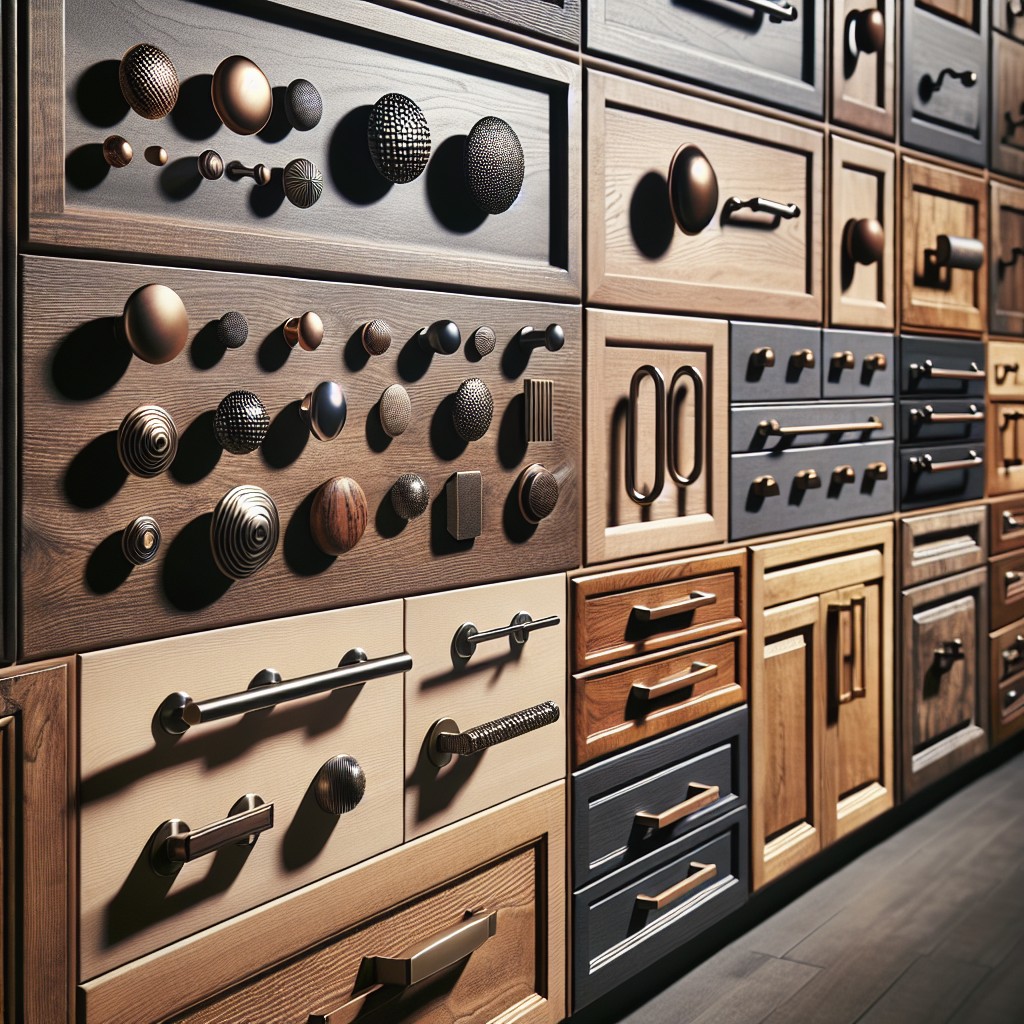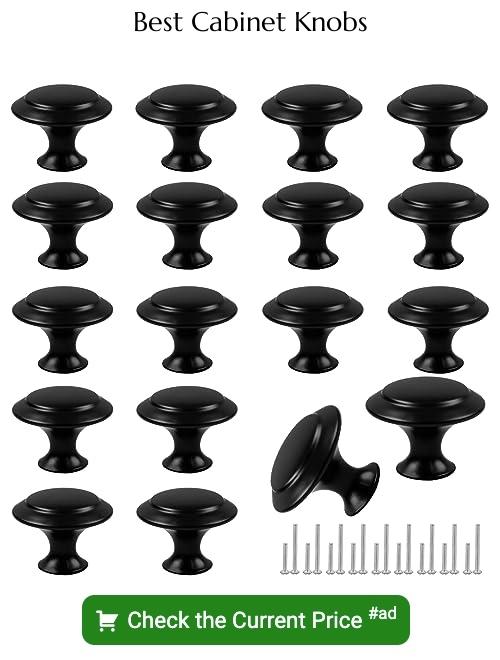Last updated on
Cabinet knob placement, while seemingly trivial, plays a pivotal role in enhancing functionality and aesthetic appeal; this article provides insightful guidelines on achieving optimal positioning for your cabinet knobs.
Key takeaways:
- Standard Placement for Knobs: 2.5 to 3 inches from the corner.
- Pull Handles Considerations: Lower third of the door.
- Larger Drawers: Use two knobs or pulls for drawers wider than 24 inches.
- Vertical Pulls: Position pulls at shoulder height for tall cabinets.
- Uniformity Across the Kitchen: Consistency is key for a harmonious look.
What's Inside
Types of Cabinet Knobs and Pulls

Diving into the world of cabinet hardware might surprise you with the variety at your fingertips. Traditional knobs are usually circular and can add a classic touch, while handles, or pulls, offer a different feel with a more substantial grip and a linear look that ranges from sleek to ornate. For a minimalist vibe, consider tab pulls that lie low against the cabinet, or for those hidden pantries and touch-latch systems, you can opt for finger pulls, which are typically recessed.
But the choices don’t end there. Cup pulls are reminiscent of an old-world farmhouse aesthetic, with a shape that’s perfect for a substantial finger grip. Bar pulls, on the other hand, lean towards the modern, with a straight bar design that suits both drawers and cabinet doors.
Materials play a significant role as well. Metal knobs and pulls, such as brushed nickel, polished chrome, or brass, impart durability and a defined style. Glass or crystal knobs exude a touch of elegance, while wooden pulls can provide warmth and a natural texture to your space.
Lastly, don’t overlook the finish. A matte finish might convey modern sophistication, whereas a glossy sheen could be seen as more traditional or glamorous. The right choice harmonizes with your cabinet style, color, and the overall mood of your kitchen or bathroom.
Cabinet Construction – Rails, Stiles, and Panels
Understanding the basic elements of cabinet construction is crucial for proper knob placement.
- Rails: These are the horizontal pieces that frame the face of the cabinet. Placement along the rail often depends on whether it’s a lower or upper cabinet.
- Stiles: The vertical counterparts to rails, stiles are key reference points for aligning knobs and pulls vertically.
- Panels: Flat surfaces enclosed by rails and stiles, panels are the face of the cabinet doors where knobs and pulls are most often attached.
- Door Edge: The distance from the knob to the door edge often follows a standard measurement to maintain consistency and visual appeal.
Paying attention to these components ensures hardware is not only well-placed but complements the cabinet’s design. When hardware is positioned thoughtfully in relation to rails, stiles, and panels, it dramatically improves both the look and functionality of the cabinets.
Cabinet Hardware: Placement and Positioning
Optimal placement of cabinet hardware can greatly enhance both the functionality and aesthetic of your kitchen or bathroom. Here are some key points to guide you:
1. Standard Placement for Knobs: For cabinet doors, knobs are typically installed between 2.5 to 3 inches from the corner of the door opposite the hinge. This location provides a comfortable balance between ease of opening and minimal strain on the cabinet’s structure.
2. Pull Handles Considerations: If you’re using pull handles, the lower third of the door is ideal. For drawers, center them on the drawer front both horizontally and vertically for a symmetrical look.
3. Larger Drawers: Drawers wider than 24 inches may benefit from two knobs or pulls. This helps distribute the force when opening and can prevent warping over time.
4. Vertical Pulls: For tall cabinets, position pulls at shoulder height. This placement prevents excessive reaching and bending.
5. Uniformity Across the Kitchen: Consistency is key. If you place a knob on one cabinet, do the same for all others at the same height and position to maintain harmony and enhance the overall look.
6. Template Use: A hardware template is an invaluable tool for ensuring accurate and consistent placement. This avoids irregularities that can disrupt the visual flow of the cabinet arrangement.
Adhering to these points will ensure your cabinetry is both beautiful and practical, with hardware that complements and serves its purpose effectively.
Consider Form And Function
When diving into the practicality of knob placement, there are a few essential points to remember:
1. Ergonomics are key: The placement should allow for natural movement; your hand should comfortably reach the knob without stretching or bending awkwardly.
2. Visual balance: The hardware should look harmonious on the cabinet, aligning with design features like the frame or paneling.
3. Consistency: Across your kitchen or space, ensure that all knobs are at the same height and relative position on each door or drawer. This uniformity contributes to a polished look.
4. Standard measurements: Although personal preference plays a role, sticking to standard placements (like positioning knobs for doors at the corner of the door frame opposite the hinge) aids in creating a cohesive feel.
5. Test it out: Before making any permanent decisions, use putty or painter’s tape to temporarily place the knobs and observe how they look and function. This allows tweaks without the commitment.
By marrying form with function, the focus is on creating a space that looks good and feels intuitive to use. With these points in mind, the practicality of everyday use is considered alongside the aesthetic to achieve an end result that is both beautiful and user-friendly.





